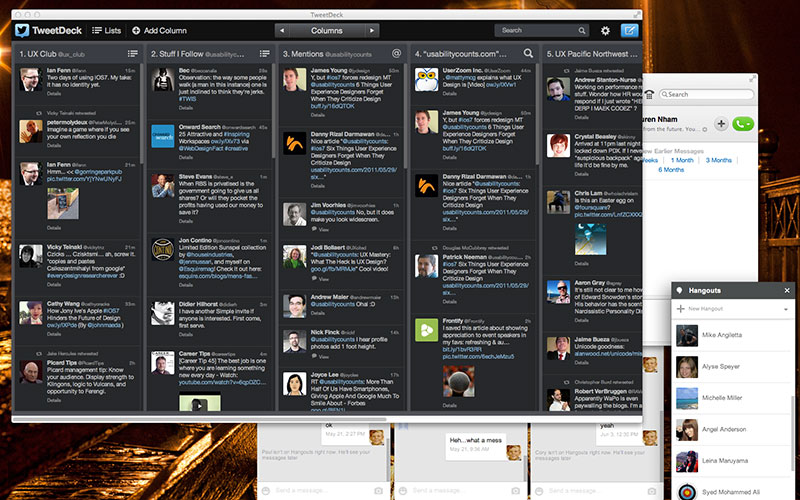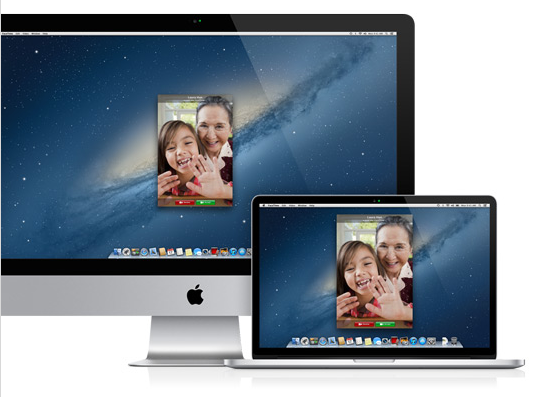Google is Missing Social and Their Culture May Be to Blame
A couple of years ago, I was interviewed by Venture Beat for an article about Google Plus. I firmly believed that large-scale user adoption for the social network was around the corner. It seemed to have a great feature set, and with their search engine they could drive significant traffic to the social network.
It hasn’t really happened.
The only people I see on my feed are Chris Pirillo, Robert Scoble, and three Google employees I know. With its relaunch, I don’t know now if Plus is ever going to take off.
Some features, like viewing the content, seem to be a direct rip-off of Pinterest. Google Hangouts look great when you first use it, but chat isn’t very usable with repeat usage. A lot of the products released during Google’s #io13 were beautiful and not usable at the same time, and they all seem to lack a social component.
A lot of Google’s products have that same social disconnect. They can’t seem to bridge the gap between using their data to optimize a tool and how to use it to encourage social interaction in many of their applications.
They design products that lack emotional connection
Very few people I meet say they “love” their Google products. And that’s the problem.
Their Android phones are usable. They like using Google search (or use it by default). They use the mail products. But when I ask if they “love their phone,” there’s usually a pause. They’ll love a feature or two, but do not have an emotional connection to the product itself.
Great products create emotional connections that go beyond their utility. People love their iPhones and love them so much that they buy other Apple products. Driving their BMW or Audi is an “experience.” This shows in Net Promoter Scores, where Apple scores in the high 70’s range with many of Google’s services at the bottom of the charts.
Emotional connection can’t be measured. It can’t be optimized through A/B testing, it is discovered through qualitative research.
I watched a grandmother interact with her grandchild electronically — the use of FaceTime to visit with someone who’s three time zones away, and doing it in a way that you could see the human value in their interactions was amazing. That moment for me was a realization that the product had become a way to enable human experiences. The technology itself had disappeared from the process.
Emotional connection is important because it gives companies leeway on building products that aren’t as successful.
iTunes isn’t easy to use. iCloud may have widespread user adoption, but confuses the user. Ping was shut down. However, it doesn’t hurt the larger brand, because consumers have an emotional connection with Apple and most of their core products.
There’s not a single Google tool I have an emotional connection with when I use it. I’m typing this on a Chromebook. It’s nice, but I don’t love it. I have Gmail. It’s easy to use, but I don’t need it. I wrote this in Google Docs, but I could use other tools. I use Google search because it has more indexed pages, but I could Bing.
I need my iPhone. It’s emotionally connected to my life and makes my life easier. Therein lies the difference.
They design everything to be more efficient, not more delightful
Google design new tools or redesigns tools that already exist and make them much better. That’s not a bad thing, but they’re designing for efficiency and not delight.
Maps is a great improvement over previous applications (better than Mapquest and Yahoo). Search finds content you want or need, and can almost predict what you are looking for (better than AltaVista or Lycos). Their advertising tools are great at drilling down to what is the best return on investment for your dollar if you’re a small business. Google tests everything, because removing that one extra click could mean making millions of dollars.
They are great with taking vast amounts of data and presenting it in a way that we find useful, at optimizing searches so there’s always one less click. They hide complexity so we can find that page about the “hamster dance” right now. But not everything about the web is about utility. Humans like discovering new things, searching and playing.
This requires developing a human connection.
The best discovery platforms show us not what we were looking for, but what we didn’t expect to find.
Facebook has a lot of that element: I’m not looking to find the photos of my friend’s party when I get there, I’m looking to find out my friends’ attendance. Pinterest is about discovering that new handbag. Instagram is about sharing our lives, one photo at a time. That’s why each has succeeded — there’s a particular human connection that goes past “is it a hammer or screwdriver” that Google seems to miss.
They doesn’t understand the environment they exist in

This is an example of Google Hangouts within context of my second screen. The multiple windows clutter the screen, and make it hard to manage chats. This is an example of something that you see only with ethnographic research i.e. watching people in their own environments.
This is especially evident in the Google Hangouts application. As chat windows open up, window after window appears at the bottom of the screen. If you’re chatting with several people, you could have up to six windows competing for your attention at the bottom of your monitor.
The problem? Chatting is something that is often a passive activity that you do in between all of the other work you do on your computer. You may be chatting with someone at work, a friend, or maybe even sending files. It’s something that happens “in between the raindrops,” the other work you are doing. It might be happening on a second screen at home while watching television, or at work, or while waiting for a friend. It’s a passive asynchronous distraction, not an active task.
Multiple chat windows works for Facebook because it happens within the context of a single environment — the Facebook browser tab. Once you hide this browser window, it’s out of sight and mind, but still accessible. Several other applications that I use, including Skype and Adium, all minimize screen real estate but still add notifications within the Mac OS X dock — out of sight until I want to solve it, within context.
Messaging software is not something you can actively test in a usability lab, because it’s unnatural there. Most of the time, when testing software this way, you are focused on certain tasks. They have to be tested under real world conditions (read: on-site visits) over hours or days of study of many real world users.
Many of the applications you use Google for (Maps, Search, Mail come to mind), are oriented to single tasks where the user’s attention is focused. The applications where the user’s attention is so unfocused (Hangouts and Google Plus) are where Google is struggling.
They know too much about us, and that makes us uncomfortable
Google has taken vast amounts of data and made it extremely manageable, even if it means dancing on the edge of violating our privacy.
The best example of this is Google Maps versus Apple Maps. The first version of Apple Maps was destined to be a trainwreck because Apple didn’t know they were solving a data problem, not a user experience problem. Users don’t want three dimensional renditions of their neighborhood — they want directions from 8th Avenue and Judah Street to Stockton Street and Columbus Avenue, and they want to know if they should be driving, taking a bus, or riding a bicycle, not what buildings they’re going to pass on the way. And they want to know it now.
That takes managing a vast amount of data. Which is exactly what Google is best at, and isn’t Apple’s core competency. Apple’s busy trying to fix it, but Google has a several year head start, and their culture is built around values that make it easy.
With many of Google’s services, cognitive dissonance is required: collecting that information is of great utility, but it requires collecting more information than we are comfortable with. We justify it in the moment (“How do I get to North Beach from Inner Sunset safely so I can have a drink at Tony Nik’s?”), and get upset about it when the usage of that data is disclosed (“Do they really track every time I do a search for a bar?”). The people that work there are comfortable with this because they believe this information should be open.
Google employees don’t have the same concerns about privacy as normal people because they are surrounded by unlimited access to data every day. It’s their culture.
You could almost say that Google’s mantra of “Don’t be evil” is in direct conflict with who they are as a company: primarily an ad-driven business that optimizes everything based on knowing every user’s behavior and storing it, forever. Many of their tools feed into this goal, and this is why Google Plus is such a painful fail. They understand the value of social data.
The failure seems to be that while they understand the value of social data, they can’t figure out how to use it to actually engage users in social interactions. It’s quite ironic, really.
Their mantra comes off of a disingenuous when compared to their core business. Users inherently distrust the company because we don’t want one organization knowing so much about us.
As much as Google wants to be soft, fuzzy and social, they almost can’t. Google Glass is a great example — there will be a successful technology that will come out just like it, but it won’t be from Google because of privacy concerns. Which leads to the next point.
They don’t hire the people they are designing for
The average technology worker in Silicon Valley has more in common with a farmer in Africa than a housewife in Iowa.
When you live in the Valley, you forget that not everyone uses iPads, Smartphones or all kinds of other technology. A lot of people make do with their three year old desktops, and they stay off “The Facebook.” I see this in Seattle, where there seems to be significantly less use of technology than in San Francisco.
This problem is especially exacerbated at Google.
The employee referral rates I have heard are in the high 75 to 80 percent range. People that work at Google are referring people that are like them, which creates a very homogenous culture. They are smart people, a lot of them from Stanford and Harvard, and they are probably great problem-solvers. But they aren’t hiring people from different backgrounds, with different viewpoints, and it’s creating a culture that is less about making truly diverse products and more about feeding the machine. This is a problem faced not only by Google, but by every company in Silicon Valley.
They have lost the connection to “the common man.” The common man doesn’t make $150,000 to $250,000 a year and take a company bus everyday down to Mountain View. They are insurance sales-people, car mechanics, housewives, and teachers that go home after work to watch “CSI: Miami”, not explore the town with Google Glass. They are my parents that have learned how to use an iPad, but do it to play Words With Friends.
An example of a market missed with Google Hangout is FaceTime users. Google might capture that market because they offer group video chat, the only major platform to do this for free. They will succeed not because of the emotional connection, but because they are the freely available option. Thus their success will be accidental because they aren’t aiming for that market.

Apple’s FaceTime promotional content emphasizes pictures of families.
Google Hangouts emphasizes friends, without a single image showing family.
The most telling point: view the FaceTime and Google Hangouts marketing, side by side. FaceTime emphasizes children and family without even mentioning who you’re calling. Google Hangouts emphasizes friends over family, and has twice as many screenshots of chats than faces.
To design for consumers, you have to have people on your team that are the target audience so you can design for it. The users have to live it.
Many other places, like Apple, Facebook, and MySpace (during their height), have that: the people that are in product development are also the target audience.
Jony Ive, for example, succeeds because he reflects a segment of the population that loves simple, well-designed products. Facebook first attracted an Ivy League, more affluent audience because that was their initial product team. They understand their target audience because they are their target audience.
Can Google build an emotional connection with their customers?
I don’t know if they can ever fix it. Many of the issues above are ingrained in their culture, and culture is really hard to change if you’re as big as Google.
Great companies develop brands that have an emotional connection with their customers, and this is something that marketers talk about endlessly when constructing their marketing programs. I saw this at Jobvite — the most devoted had an emotional connection with their product, and would bring it with them wherever they went. They were evangelical about their devotion to their product through thick and thin.
Google doesn’t seem to have it, because that’s not how they have built their company. You can’t optimize for culture.
But it does create opportunity for other startups. It’s a great cautionary tale when designing stuff for people — you have to not only understand them, you have to be them to really understand their needs.
$99 Tough Love Resume and Portfolio Review
Tough love. Great Advice. Receive an one hour portfolio review and career coaching session online, or in person if you're in Seattle.

